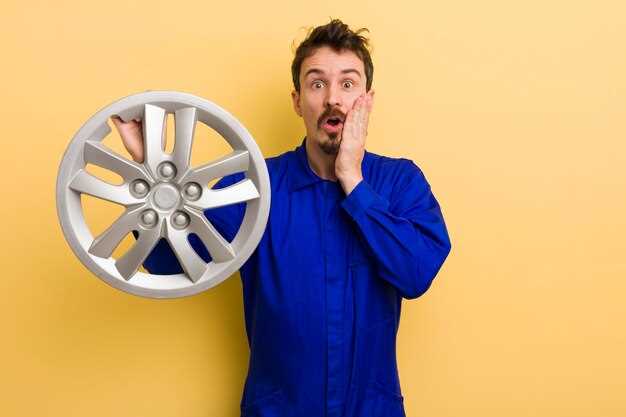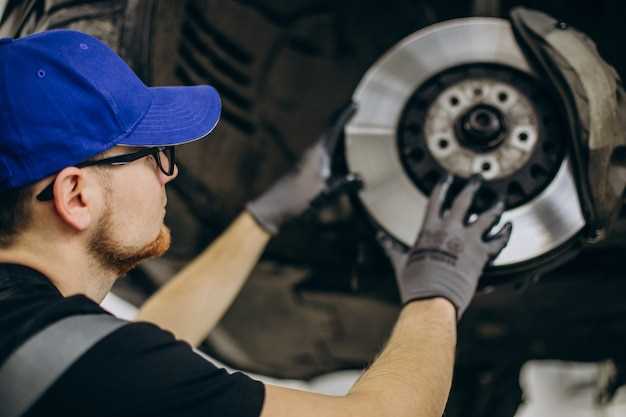
The braking system of your Volkswagen Corrado is one of its most critical components, ensuring your safety on the road. Regular inspection of the brakes is essential to identify any issues early and maintain optimal performance. Ignoring signs of wear can lead to significant problems and increase the risk of accidents.
One of the most obvious indicators that your brakes may need service is if you notice that they feel worn. This can manifest as a soft or spongy brake pedal, which often suggests that the brake pads have degraded or that there may be air in the brake lines. Additionally, any unusual noises, such as grinding or squeaking, should not be overlooked, as these can point to serious wear on the brake components.
Even subtle changes in your vehicle’s braking performance can be a sign that it’s time for a thorough brake inspection. If you find yourself requiring more force to stop or if the vehicle tends to veer to one side while braking, these symptoms indicate that the brakes may be worn unevenly or that other issues are at play. It is crucial to address these concerns promptly to ensure the continued safety and functionality of your Corrado.
Unusual Noises When Braking
Hearing unusual noises when applying the brakes is a clear indicator that your Corrado may require immediate inspection. These sounds can manifest as squeaking, grinding, or rattling, each pointing to specific issues with the brake system. Squeaking noises often suggest that the brake pads are worn and may need replacement. If the sound becomes a grinding noise, it signifies that the brake pads have worn down to the metal, risking damage to the rotors.
Rattling noises might indicate loose components or a failing brake caliper. Ignoring these sounds can lead to more severe damage and costly repairs. Regular inspection of your brakes is essential to ensure optimal performance and safety. If you notice any unusual sounds during braking, it is critical to have your brakes examined by a professional technician. Prompt attention can prevent further complications and provide peace of mind while driving.
Vibration in the Brake Pedal
If you notice a vibration in your brake pedal while applying the brakes, it could be a clear indication that your Corrado requires urgent brake inspection. This sensation can be caused by several underlying issues that need to be addressed immediately to ensure your safety on the road.
One common cause of a vibrating brake pedal is warped brake rotors. When rotors are unevenly worn or damaged, they create an inconsistent surface for the brake pads, leading to vibrations during braking. Additionally, brake components such as calipers or pads might be sticking or malfunctioning, which can also result in similar sensations.
Ignoring these vibrations can lead to more severe braking issues, increased wear on brake components, and potentially costly repairs if not handled promptly. Therefore, it’s crucial to take these signs seriously and arrange for a professional brake inspection as soon as possible.
| Possible Causes | Symptoms | Action Needed |
|---|---|---|
| Warped brake rotors | Vibration in pedal when braking | Inspect and replace rotors if necessary |
| Worn brake pads | Grinding noise, vibration | Replace brake pads |
| Sticking calipers | Uneven brake feel, vibration | Inspect and repair calipers |
| Brake fluid contamination | Spongy pedal feel, vibration | Flush and replace brake fluid |
Prompt action in resolving vibrations in your brake pedal not only enhances the performance of your Corrado but also ensures a safer driving experience. Regular maintenance and timely inspections are key to keeping your braking system in optimal condition.
Dashboard Warning Lights Activation

One of the first indicators that your Corrado may require brake service is the activation of dashboard warning lights. These lights serve as a crucial alert system, signaling potential issues with your vehicle’s braking system.
Key warning lights to watch for include:
- Brake Warning Light: This light typically indicates a problem with the brake system, including low brake fluid levels or worn brake pads.
- ABS Warning Light: If this light illuminates, it may suggest a malfunction in the Anti-lock Braking System, which plays a critical role in maintaining control during braking.
- Check Engine Light: While not specific to brakes, this light can indicate a variety of issues that may adversely affect braking performance.
When any of these warning lights activate, it’s essential to conduct an immediate inspection of the brakes. Delaying could lead to further damage or compromised safety. Signs of worn brakes such as squeaking, grinding, or a spongy pedal feel should also prompt a closer look.
Regular maintenance checks and promptly addressing warning lights can ensure the longevity and reliability of your braking system, ultimately keeping you safe on the road.
Reduced Brake Responsiveness
If you notice that your Corrado’s braking system feels less responsive than usual, it could be a sign that brake service is necessary. This reduction in responsiveness can occur due to several factors, typically involving worn components within the brake system.
When brakes become worn, the friction material on the brake pads may degrade, leading to decreased effectiveness. This wear can result in a longer stopping distance and a spongy feeling when applying the brake pedal. If you find yourself pressing the pedal further than normal before feeling the brakes engage, it’s time for an inspection.
Additionally, components such as brake rotors and calipers can also become worn over time. Any irregularities in these parts can create inconsistencies in braking performance, which may manifest as a pulling sensation or an uneven response when slowing down. Addressing these issues quickly is crucial to maintaining safety and performance.
Always pay attention to any changes in your vehicle’s braking behavior. Scheduling regular inspections and servicing your brakes at the first signs of problems can prevent more significant issues and keep your Corrado performing optimally.
Thinning Brake Pads Inspection
Regular inspection of brake pads is crucial for ensuring safe driving conditions. Over time, brake pads become worn due to friction against the brake rotors. If left unchecked, thinning brake pads can lead to reduced stopping power and increased stopping distances.
During an inspection, it is important to visually assess the thickness of the brake pads. Most pads have a wear indicator that becomes visible once the material is sufficiently worn down. If the pads appear to be less than 3 millimeters thick, it is a strong indication that they require immediate replacement.
Additionally, it’s essential to listen for unusual noises during braking. Squeaking or grinding sounds may signal that the pads are highly worn and need attention. Furthermore, uneven wear across the brake pads can indicate alignment issues that should be addressed promptly.
In summary, performing regular inspections of your brakes and monitoring for signs of wear will significantly enhance your safety on the road and prolong the lifespan of your braking system.
Visual Checks for Brake Component Wear

Regular visual inspections are crucial for identifying worn brake components before they lead to serious issues. Start by examining the brake pads; they should have a minimum thickness of 3 millimeters. If the friction material appears less than this, it’s time for replacement.
Next, inspect the brake rotors for signs of wear, such as grooves or discoloration. Any visible cracks or a warped surface indicate that the rotors may need servicing. Additionally, look for uneven wear patterns, which can suggest issues with the calipers or alignment.
The brake lines should be free of any leaks or cracks. Check for signs of fluid seepage, which can compromise the braking system’s integrity. Inspecting the brake fluid reservoir can also provide hints about your brake health; low fluid levels may indicate worn components or leaks within the system.
Don’t forget to check the brake calipers as well. Look for rust, corrosion, or any debris that may hinder their operation. Swollen or damaged seals may also suggest that the calipers require attention.
Performing thorough visual checks during your routine maintenance can help ensure the effectiveness of your brakes and enhance your overall driving safety.













